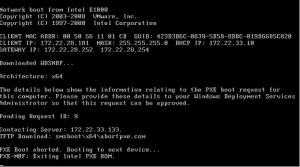How to Reinstall Windows 10: A Comprehensive Guide


How to Reinstall Windows 10: A Comprehensive Guide


Introduction
Reinstalling Windows 10 can be a helpful solution when you encounter persistent system issues, malware infections, or want to start with a clean slate. In this comprehensive guide, we will walk you through the step-by-step process of reinstalling Windows 10 using various methods, along with important tips to ensure a successful reinstallation.
Table of Contents
Method 1: Using the Windows 10 Reset Feature
Method 2: Using a Windows 10 Installation Media
Method 3: Using the Windows 10 Recovery Environment
Method 1: Using the Windows 10 Reset Feature
The Windows 10 Reset feature allows you to reinstall Windows 10 while keeping your personal files intact. Follow these steps to reinstall Windows 10 using this method:
Step 1: Open the Settings menu
Click on the “Start” menu and select the “Settings” (gear) icon.
Step 2: Access the Update & Security settings
In the Windows Settings window, click on “Update & Security.”
Step 3: Go to the Recovery section
From the left pane of the Update & Security window, select “Recovery.”
Step 4: Start the Windows 10 Reset process
Under the “Reset this PC” section, click on the “Get started” button.
Choose either “Keep my files” or “Remove everything” based on your preference. The former option reinstalls Windows while keeping your personal files, while the latter option removes everything and performs a clean installation.
Step 5: Follow the on-screen instructions
Follow the prompts and instructions provided by the Windows 10 Reset feature to complete the reinstallation process.
The process may take some time, and your computer will restart several times.
Method 2: Using a Windows 10 Installation Media
Using a Windows 10 installation media allows you to perform a clean installation of Windows 10, erasing all the data on your system drive. Here’s how to reinstall Windows 10 using this method:
Step 1: Create a Windows 10 installation media
Obtain a USB flash drive with at least 8GB of storage space.
Download the official Windows 10 ISO file from the Microsoft website.
Use the Windows USB/DVD Download Tool or Rufus software to create a bootable USB drive with the Windows 10 ISO file.
Step 2: Boot from the Windows 10 installation media
Insert the bootable USB drive into your computer.
Restart your computer and access the BIOS/UEFI settings.
Set the USB drive as the primary boot device in the BIOS/UEFI settings.
Save the changes and exit the BIOS/UEFI settings.
Your computer will restart and boot from the Windows 10 installation media.
Step 3: Install Windows 10
Follow the on-screen instructions to install Windows 10.
Select your language, time, and keyboard preferences when prompted.
Choose “Custom Install” when asked about the type of installation.
Select the system drive (usually labeled “Drive 0: Unallocated Space”) and click “Next” to begin the installation.
Windows 10 will be installed on the selected drive, and your computer will restart multiple times during the process.
Method 3: Using the Windows 10 Recovery Environment
The Windows 10 Recovery Environment provides an alternative method to reinstall Windows 10. Here’s how to use this method:
Step 1: Access the Windows 10 Recovery Environment
Restart your computer and interrupt the startup process three times consecutively.
On the fourth startup, the Windows 10 Recovery Environment will automatically load.
Step 2: Choose the Troubleshoot option
In the Windows 10 Recovery Environment, select “Troubleshoot.”
Step 3: Select the Reset this PC option
Click on “Reset this PC” and choose either “Keep my files” or “Remove everything” based on your preference.
Follow the on-screen instructions to proceed with the reinstallation process.
Important Tips for Reinstalling Windows 10
1. Backup your important files:
Before reinstalling Windows 10, it’s crucial to back up your important files to an external storage device or cloud storage. Reinstallation may result in data loss, so having a backup ensures you don’t lose any important data.
2. Install necessary drivers and updates:
After reinstalling Windows 10, make sure to install the latest drivers for your hardware components. Visit the manufacturer’s website to download and install the appropriate drivers. Additionally, run Windows Update to install the latest updates and security patches.
3. Keep your product key handy:
If prompted for a product key during the reinstallation process, ensure you have your Windows 10 product key available. This key is typically found on a sticker on your computer or in the documentation provided by Microsoft.
4. Reinstall applications and software:
After reinstalling Windows 10, you’ll need to reinstall any applications and software you previously had. Make a list of the applications you use and download them from the official websites or trusted sources.
5. Consider formatting your system drive:
If you want to completely wipe your system drive and start with a clean installation, consider formatting the drive during the reinstallation process. This will erase all data on the drive, so make sure you have backed up any important files.
Conclusion
Reinstalling Windows 10 can help resolve various system issues and provide a fresh start. By following the step-by-step instructions provided in this guide and considering the important tips, you can successfully reinstall Windows 10 using different methods.
Remember to back up your important files, install necessary drivers and updates, and keep your product key handy for a smooth reinstallation process.








